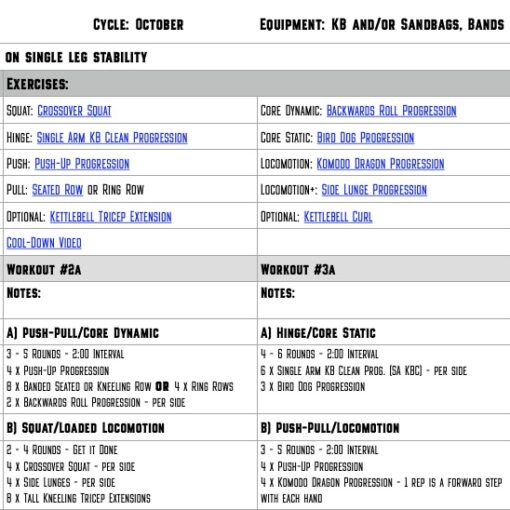This blog post is dedicated to the athletes who have stayed in contact with me and have asked how they can continue to stay fit. Thank you!
Currently, in Reno, the Air Quality Index is 133 (Unhealthy for Sensitive Groups: People with heart or lung disease, older adults, and children should reduce prolonged or heavy exertion) and it has been that way for almost a week. I am hoping to be more active outside in September and October when the weather is a little more forgiving so I try to work out at the gym Tuesday and Thursday so I can save Friday, Saturday and/or Sunday to adventure with Susan. I had a little challenge, how to train cardio without training cardio?
One of the many mistakes I made as a new coach is to program workouts that I did or that I saw other athletes with higher training ages do. When I started to use movement quality instead of capacity as the primary metric, I started getting better results. When I started to program movements rather than exercises, I started to understand the purpose behind the workouts that high training age athletes perform, rather than seeing the exercises themselves as “doing all the heavy lifting” (sorry about that). I call training with a purpose training like a professional athlete. Training isn’t the end goal, it is a means to an end, a professional works smarter before they work harder. A professional adjusts the implementation details to meet the end goal. To illustrate my point, let’s start at the workout and work backwards… or maybe upwards.
Here’s the workout I did:
Warm-Up: The warm-up looked a lot like the one in my 30 minute workout post.
Workout – The purpose of this workout was to work on some of the bits and pieces of trail running, in particular, hip flexion:
6 Rounds with a focus on movement quality. If I couldn’t breathe through my nose, I rested until my respiratory rate went down.
5 x Back Squats to improve on general leg and back strength (Any squats are appropriate, even unloaded)
40 m Sled pulls to improve hamstring activation and a more forward running position. (This is basically a loaded Janda lunge, start here if you don’t have a sled.)
2 x Forward roll on rings drill to work on posterior rotation of my pelvis and core strength, as well as, some straight arm strength. Start with planks if you don’t have rings or some version of parallel bars.
I did a workout that focuses on running not because I run very often, but exactly the opposite, I don’t run very often but it brings me so much joy, I want to be able run and not pay too high a price the next day (or the following weeks) because of an injury.
There are many ways to describe how professional athletes train but here are few that are relevant for our discussion:
- A professional athlete trains for a specific performance outcome. Sometimes there are body composition changes; however, body composition is not the fundamental reason for training, performance is.
- A professional athlete trains towards a specific physiological/neurological marker. Some physiological markers are VO2max, Heart Rate Variability or resting heart rate but other measurements like shoulder or hip internal range of motion, vertical or broad jump or muscle growth (hypertrophy), needed in some contact sports, are used too. Sometimes, it is just pain-free movement.
- A professional athlete’s job is to participate in their sport. Injury while training, is considered a failure of the coaching staff, not the athlete. It is safe to say that the best professional strength coaches train first for consistency (ability to play sport with minimal injuries) and then performance.
- Professional athletes do not only play their sport to get better at their sport (i.e. boxers don’t just box to get better, marathoners don’t just go on long runs, etc). Professional athletes perform drills, view video tape, they practice skills, in short, they practice more than they perform when they train. In fact, one very common compliment of a professional athlete is that they are “students of the sport.”
- Professional athletes are mindful when they train, no “junk miles.”
- Finally, professional athletes often have very long time frames with which to measure their career. Olympic athletes are the easiest example; however, Geraint Thomas, the winner of the 2018 Tour de France, came in 140th out of 141 finishers on his first Tour de France in 2007. Eleven years later…
Let’s say you’re facing a challenge in your training, whether it is consistency, air quality/weather/location, pregnancy, injury or simply it just isn’t fun anymore. Take a step back to assess your situation and start training like a professional athlete.
- First of all, find a sport. Here are some of the my current and former athlete’s “sports:” Surfing, seeing the grandkids grow up, triathlon, trail running/hiking/backpacking, basketball, running 1/2 marathons, skiing, weightlifting, golf, etc. I think Susan’s sport is “Anything outside where she can see animals and/or wildflowers.” The connecting theme for all these athletes is that their chosen sport brings them joy.
- What is the main physiological dependency for that sport for you, what are you training to change? Is it back pain, shoulder instability, or a “trick” knee that is preventing you from practicing your sport or do you just need to improve your general conditioning or maybe you need more specificity in your training like how to train for high altitude hiking at sea level. I train a woman who is the primary caretaker for her husband who has an advanced case of MS. Her dependency is back and shoulder health because she often has to physically move her husband but periodically her kids take her on vacation so her “performance” requires her to walk up to 10 miles. I have a trained a couple of athletes (golfers and endurance athletes) who work almost exclusively on hinging/deadlifting so they can be strong in a hinged position. Some people just need to add bone mass so they don’t break a bone while training.
- Staying safe in your training is probably going to have something to do with your physiological dependency. Do you know how to stay safe and still improve your weak link? Spoiler alert, work on the technique of the exercises and lifts you are using to train before training capacity in those movements.
- What are the drills and/or skills that you can add into your training that will improve your physiological dependency? If you have a trick shoulder, you should probably have some flavor of crawling and the (Turkish) Get-Up in your program. If you are a runner, you’ll probably need some way to build (or assess) single leg stability so something like a lunge, a single leg deadlift or a split squat should be in your warm-up and/or workout.
- Each workout should have a purpose and the programing and exercises should support the purpose. Know that you and your training partner could have similar workouts but be training for a different dependency, maybe even different sports. Conversely, you could be training for the same sport and have very different workouts. Creating a program can be a brutal process for both the athlete and the coach if you don’t have a physiological marker or dependency for your sport. I have a colleague who was prevented from becoming a CrossFit affiliate simply because he questioned the purpose of a “workout” posted on the CF site that was 100 Turkish Get-Ups. The program and exercises are the implementation details for a return to joy, they shouldn’t be the joy itself. Having said that, I am totally infatuated with fat bar deadlifts right now.
- Above all, it’s a process, enjoy the ride!






One thought on “Train Like a Professional Athlete”